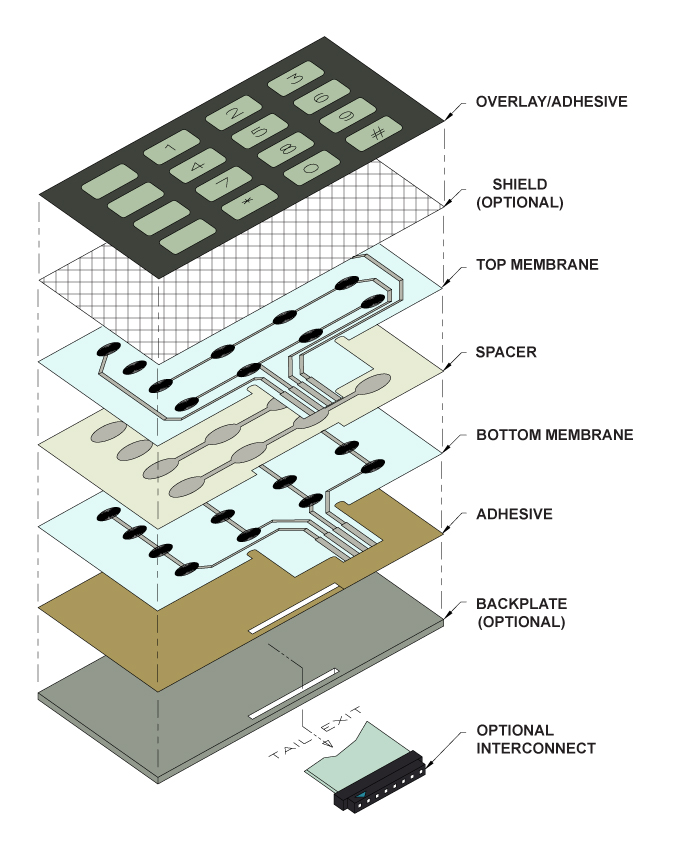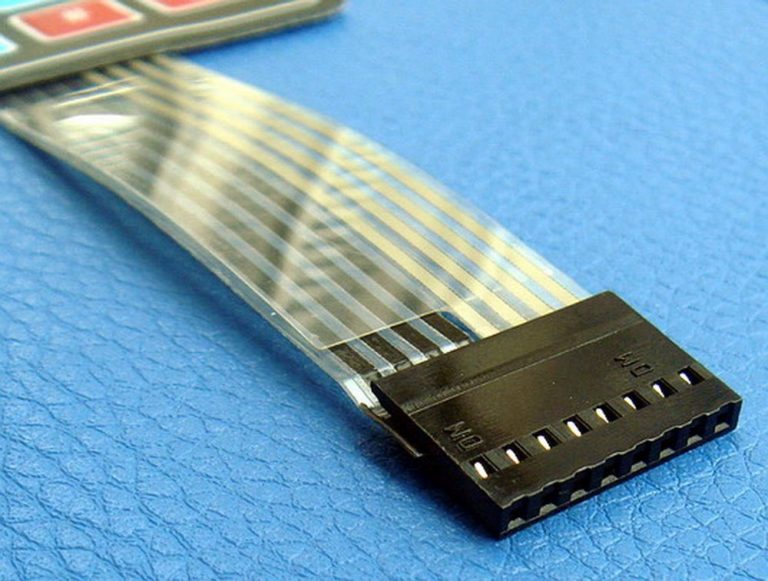A well-known membrane switch manufacturer delivers both prototyping and mass production options.
A well-known membrane switch manufacturer delivers both prototyping and mass production options.
Blog Article
All Regarding Membrane Switch Over: Recognizing Its Layout and Capability
When you consider the control user interfaces in modern-day gadgets, membrane layer buttons frequently come to mind. These components are a lot more than just switches; they blend layout and functionality seamlessly. Understanding just how they function and what makes them reliable can transform your viewpoint on day-to-day electronics. But, there are nuances to their style and efficiency that you might not recognize. Allow's explore what sets membrane switches aside from various other control systems.
What Are Membrane Layer Buttons?

Their seamless nature makes them very easy to clean and immune to dust and moisture, an important function in several environments. Membrane layer buttons can likewise be personalized concerning form, size, and graphics, permitting producers to produce one-of-a-kind user interfaces tailored to particular items. Plus, they're lightweight and thin, which helps in reducing the total bulk of gadgets. In general, membrane switches play a considerable function in boosting user experience across a broad variety of applications.
Exactly How Membrane Switches Over Work
When you push a key on a membrane layer button, it turns on a straightforward yet effective mechanism. The top layer, typically made of adaptable product, lowers onto a conductive layer beneath it. This activity bridges the space between conductive traces, completing an electrical circuit. As quickly as the circuit shuts, it sends a signal to the gadget's controller, which translates your input.
You'll notice that the responsive responses varies based on the switch style, supplying either a soft click or a more noticable action. Once you launch the secret, the membrane returns to its original placement, reopening the circuit and stopping the signal. This process occurs virtually instantly, making sure a receptive customer experience.
Membrane switches are prominent due to their durability and resistance to dust and moisture, making them optimal for various applications, from house appliances to medical tools. Understanding this operation helps you value their widespread use.
Key Parts of Membrane Layer Switches
Recognizing the essential parts of membrane buttons is basic for realizing their performance and layout. The protective layer shields versus environmental aspects and put on, prolonging the button's life expectancy. By recognizing these components, you'll obtain insight into just how membrane switches run and their value in various applications.
Materials Utilized in Membrane Switch Over Style
The efficiency and resilience of membrane changes heavily depend upon the products made use of in their style. You generally run into polyester and polycarbonate as primary substrates as a result of their exceptional stamina and adaptability. These materials stand up to scratches and chemicals, making them perfect for requiring atmospheres.
The conductive layers frequently use silver or carbon, selected for their integrity and conductivity. membrane switch manufacturer. Silver supplies premium efficiency, while carbon is an affordable alternative. For the overlay, you might think about a matte or shiny surface, depending on your aesthetic demands and customer experience
Adhesives play a necessary function too; they bond layers securely and assure long life. Make sure to select adhesives that withstand environmental aspects like temperature and moisture. Don't overlook the importance of a good printing strategy for graphics, as it improves both functionality and aesthetic appeal. Picking the best materials will guarantee your membrane layer switch stands the test of time.
Style Considerations for Membrane Layer Switches
While designing membrane layer buttons, it's crucial to take into account various factors that influence their capability and customer experience. Start by concentrating on the design and switch dimension; try this out make certain they're intuitive and easy to browse.
Don't forget the visuals design; clear labeling and color comparison are significant for exposure. Verify your layout suits ecological see post variables, like wetness or temperature variations, which can influence efficiency. Finally, keep in mind the significance of testing prototypes with genuine users to collect comments and make necessary adjustments. This repetitive process assists you improve the design, verifying it meets both practical and aesthetic demands efficiently. By meticulously considering these aspects, you'll develop a membrane layer button that improves functionality and satisfaction.
Applications of Membrane Switches
Membrane layer buttons are functional parts discovered in numerous applications, from commercial tools to customer electronics. You'll see their impact in makers that need sturdy interfaces and in tools that benefit from smooth layouts. Recognizing these applications assists you appreciate the capability and practicality of membrane buttons in everyday modern technology.
Industrial Tools Usage
When you're looking to improve the performance of commercial tools, membrane switches provide a trusted remedy that combines longevity with easy to use design. These buttons are best for harsh settings, offering resistance to dirt, dampness, and chemicals. Embrace membrane buttons to enhance your operations and enhance overall performance.
Consumer Electronics Integration
In the domain additional reading name of consumer electronic devices, membrane buttons play an essential role in enhancing user communication and device capability. You'll find them in gadgets like microwaves, remote controls, and gaming consoles, giving a seamless method to interact with technology. Their smooth style enables easy combination into different products, making controls instinctive and user-friendly. With their ability to include graphics and backlighting, you can take pleasure in a modern visual that matches the gadget's overall appearance. Membrane layer switches also assure resilience and resistance to dust and dampness, prolonging the life-span of your electronic devices. By picking membrane layer switches, you improve not just the capability but likewise the style of your devices, making day-to-day communications smooth and pleasurable.
Advantages and Negative Aspects of Membrane Layer Switches
While membrane layer switches offer a series of advantages, they also include some disadvantages that you need to consider. One significant advantage is their portable layout, making them ideal for space-constrained applications. They're additionally cost-efficient, giving a long lasting service with a low manufacturing price. In enhancement, their seamless surface area is simple to tidy, boosting health in settings like hospitals.

Membrane switches can have a much shorter life-span compared to mechanical buttons, particularly under hefty use. They can also be less tactile, which might impact user feedback throughout operation. Balancing these pros and cons will certainly help you establish if membrane switches are the best fit for your task.
Regularly Asked Questions
For How Long Do Membrane Layer Changes Typically Last?
Membrane switches generally last between 5 to 10 years, depending on usage and environmental problems. You'll intend to evaluate variables like wear, exposure to dampness, and temperature level changes to determine their long life effectively.
Can Membrane Switches Be Personalized for Specific Designs?
Yes, you can personalize membrane switches to fit certain designs (membrane switch manufacturer). You'll have the flexibility to select colors, forms, and designs that match your project's needs, ensuring they blend flawlessly with your total visual
What Is the Cost Variety for Membrane Layer Change Manufacturing?
The cost variety for membrane switch manufacturing normally falls between $1 and $10 per unit, depending on factors like style complexity, quantity, and products. You can obtain quotes from makers to locate the most effective option.

Are Membrane Layer Switches Over Water Resistant or Resistant?
Membrane layer switches can be designed to be waterproof or resistant, depending upon products utilized and building and construction techniques. If you need them for wet atmospheres, guarantee you specify those requirements during the style process.
How Do Membrane Layer Switches Contrast to Traditional Buttons?
Membrane layer switches are usually thinner and much more versatile than conventional buttons, offering a smooth design. They're usually simpler to cleanse and integrate, but might not supply the tactile comments you're used to with mechanical options.
Verdict

Report this page